I COVET It All…
I really love it when galleries think outside the box and challenge their artists to do the same. This is especially welcoming during the summer months when most galleries are too lazy to turn on the lights knowing that their clients are on vacation. Which is why I am so pleased with a new show called “Covet” (what a great title!) that has been jointly organized by Sienna Patti Contemporary and Ferrin Gallery both in the Berkshires of Massachusetts and on view through August 17th (note: Sienna’s portion will be closing on August 9th).
 |
| Giselle Hicks “and then it was still”, 2012 50 x 86 x 23 in. Vitreous China, Wood |
I first learned about COVET this past April at SOFA NY. The two galleries set-up a booth at the show to give attendees a sneak peak of their summer plans. I was immediately drawn to the work on view, like Molly Hatch’s “Lost Arcadia” (2012), thirty dinner plates mounted on the wall, each one a piece of a puzzle that when viewed together depicts a beautiful landscape scene inspired by an 18th century painting by Isaac de Moucheron that is in the collection of the Metropolitan Museum of Art or Giselle Hicks’ gorgeous “and then it was still” (2012) vase overflowing with delicate bisque flowers that spillover to the table. This work was inspired by a Flemish 17th century painting also from the Met’s collection. These are just two examples of a COVET collaboration, which paired top museum curators (an impressive group that includes Jane Adlin and Alice Cooney Frelinghuysen from the Met, Emily Zilber from the MFA in Boston, Cindi Strauss from the MFA in Houston, and Kathleen Morris, from the Clark Art Institute in Williamstown) with emerging and established artists provoking them to strike up a conversation about “content, context, social history, and patronage.” The two group show combined feature over thirty artists.
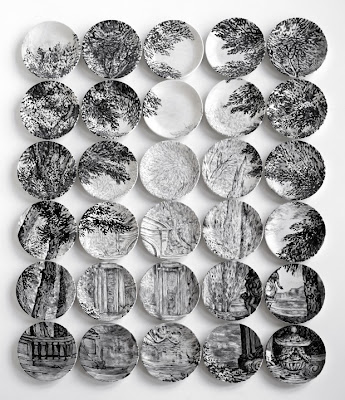 |
| Molly Hatch,”Lost Arcadia” 201260 x 50 x 1.5 in., 30 ceramic dinner plates, hand painted with glaze and under glaze materials |
In actually, as Sienna Patti told me over the phone the other day, artists have always looked to the past. Therefore it was not that much of a stretch for Patti and Ferrin to ask them to create new work in all media based on what they saw. The gallerists made the introductions and gave their artists full creative freedom. Patti told me that the artists invited weren’t simply in their stable but people that were either already working in this fashion or those who hadn’t but would enjoy the project, and people who she had never worked with but wanted to. It took each artist anywhere from three to six months to produce the work and the results were stellar. While it is hard to write about all of the work on view, two artists in particular intrigued me.
Jennifer Trask contributed two very different works but both incredibly powerful and oh, so gorgeous. The first, “Revival Neck Object” (2012) was inspired by a Cartel clock from the 1700’s from the collection of the Metropolitan Museum of Art. For Trask, who makes sculpture and jewelry from carved antique frames and animals bones, the Cartel clock seems like an obvious point of reference because of the gorgeous swirling gilt bronze frame. Although the artist admits that “the pressure to find ‘one’ object that I was particularly enamored with at the MET was an impossible task.” In fact she explains her two very unique works by saying that “I was able to do is identify two very distinct styles of objects that hold equal appeal for me. I found that I’m drawn to objects on opposite ends of the style continuum: Baroque carved pieces to deco furniture right down to minimalist paintings.”
|
Cartel |
| Jennifer Trask,
Revival Neck object, 2012
Wood, gesso, 23.75k gold leaf, antlers, boars tusks.
The bulk is carved from a c. 1900 clock body from Sweden. Additional wooden parts carved from 17th, 18th c. Italian frames.
|
The “Revival Neck Object” is a sweeping, grandiose testament not only to Trask’s wild imagination but her skill as an artist. In explaining this work, Trask has said that “it is a wearable piece – theatrical, leaning toward absurdity. An unapologetic spectacle. The gilded scrolls with boars tusks and antler consumes the wearer.” I would let this piece consume me any day.
 |
| Jennifer Trask
Limb, 2012
|
Artist Doug Bucci got the idea for his contribution, a brooch titled “Sweetmeat” which comes in its own basket, two years ago when visiting the Philadelphia Museum of Art and seeing Emick Romer’s 18th century silver epergne. COVET simply allowed him to “resolve” this idea and begin creating pieces that will eventually complete his own version of an epergne, or a centerpiece.
 |
|
Doug Bucci, Sweetmeat. Basket, 2012, 3D Printed Stainless Steel, 7 x 7 x 3.5
|
 |
| Doub Bucci, Sweetmeat. Brooch, 2012, Photopolymer (hearing aid resin), polychrome, and 18K gold |
Bucci, an artist who openly talks about his battle with diabetes and who makes it a large part of his work, wanted to focus on the implications of overindulgence and also drew inspiration from “social context from 18th century dining and the intricate service ware used at the time.” Bucci explains that “when looking back at dining in the 18th century and placing in a social context, it was clearly a display of wealth, power and status. In the present day, such over-indulgences can have deadly consequences, leading to obesity, diabetes, and diabetic complications. I drew from the beauty of the table service to recreate an intricate vessel, but now the gruesome image is the shrouded human consequence of such action.” Both the brooch and the basket are examples of Bucci’s use of unconventional materials, the brooch is made of photopolymer, the same type of plastic used for hearing aids, and his implementation of CAD to design and make jewelry. The artist takes physical data from blood glucose readings and puts that into the software program which in turn creates patterns that he transfers onto the jewelry. All of Bucci’s pieces are made to be worn but the concept is integral to the piece just as much as its design.
Patti and Ferrin are also behind ArtBerkshires, an initiative to give visitors in the summer months something else to look at besides the performing arts (the Berkshires is the location of Jacob’s Pillow and numerous other summer festivals). The two gallerists have developed a whole program surrounding the exhibition, including tours, artist talks, and, my favorite, a dinner called Dish+ Dine that gives artists, curators, and patrons an opportunity to get together to talk over good food, good wine, and good art, literally. The event, scheduled for August 17th, will be catered by the famed Red Lion Inn and guests will be able to eat off plates made by Hatch. How cool is that!?
When not busy with ArtBerkshires and its summer programs, Patti runs two successful galleries, Sienna Patti Contemporary specializing in contemporary art and Sienna Gallery, which is how I came to know her, focusing on contemporary studio jewelry. Ferrin’s gallery features figural sculpture and studio ceramics.
For a complete list of scheduled events visit http://artberkshires.org/events/
1 comment
Calendar
| M | T | W | T | F | S | S |
|---|---|---|---|---|---|---|
| 1 | 2 | 3 | 4 | 5 | 6 | 7 |
| 8 | 9 | 10 | 11 | 12 | 13 | 14 |
| 15 | 16 | 17 | 18 | 19 | 20 | 21 |
| 22 | 23 | 24 | 25 | 26 | 27 | 28 |
| 29 | 30 | 31 | ||||
Archives
- June 2018
- March 2018
- December 2016
- January 2016
- November 2015
- September 2015
- August 2015
- June 2015
- March 2015
- February 2015
- December 2014
- November 2014
- October 2014
- May 2014
- April 2014
- January 2014
- December 2013
- November 2013
- October 2013
- September 2013
- June 2013
- May 2013
- April 2013
- March 2013
- February 2013
- December 2012
- November 2012
- October 2012
- September 2012
- August 2012
- July 2012
- June 2012
- May 2012
- April 2012
- March 2012
- February 2012
- January 2012
- December 2011
- November 2011
- October 2011
- September 2011
- July 2011
- June 2011
- May 2011
- April 2011
- March 2011
- February 2011
- January 2011
- December 2010
- November 2010
- October 2010
- September 2010
- July 2010
- June 2010
- May 2010
- April 2010
- March 2010
- February 2010
- January 2010
- December 2009
- November 2009
- October 2009
- September 2009
- August 2009
- July 2009
- June 2009
Categories
- 20th c. design
- Architecture
- Art Deco
- Art Jewelry Forum
- Art Nouveau
- Auction
- Bard Graduate Center
- Blog update
- Brooklyn Metal Works
- Brooklyn Museum
- Ceramics
- Christie's
- Contemporary Art
- Contemporary Design
- Cooper-Hewitt
- Costume Institute
- Decorative Arts Calendar
- Design Exhibition Review
- Designer Spotlight
- Exhibition review
- Extraordinary lives
- Fashion
- Fashion exhibition review
- Fashion photography
- Film
- Fresh Talent
- Furniture
- Gallery Spotlight
- Glass
- ICP NY
- Italian Design
- Jewelry
- Lecture
- MCNY
- Metropolitan Museum of Art
- MoMA
- Museum at F.I.T
- Museum of Arts and Design
- Neue Galerie NY
- On the Market
- Paper Art
- Paris
- Phillips de Pury & Company
- Pinakothek de Moderne
- Platforma
- Public Art
- Rago
- Recently Published Articles
- Russian Decorative Arts
- R|R Gallery
- Sculpture
- Sotheby's
- Television
- Textiles
- Travel
- Uncategorized
- Upcoming Events
- Vintage Clothing
- Wiener Werkstatte
- Wright
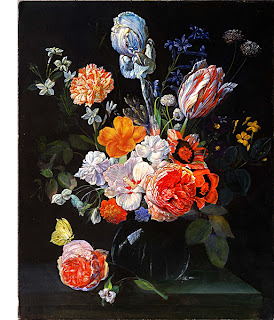
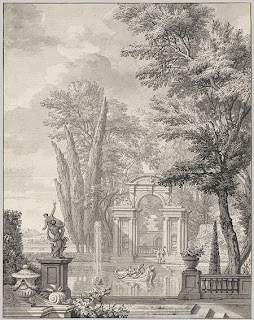
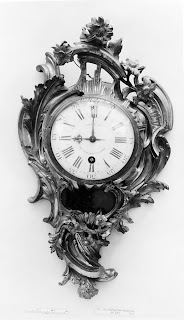


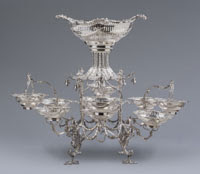
Leave a Reply